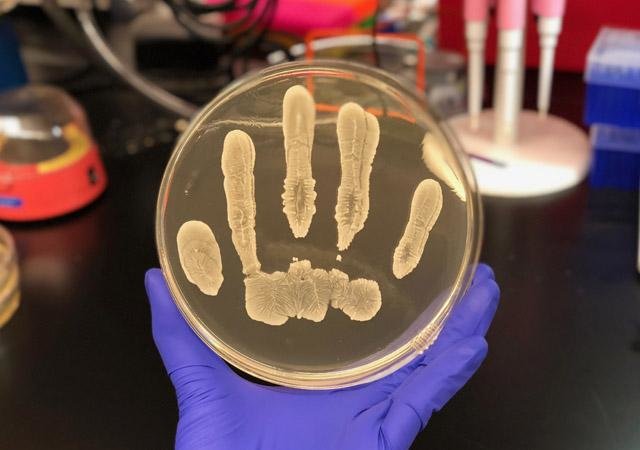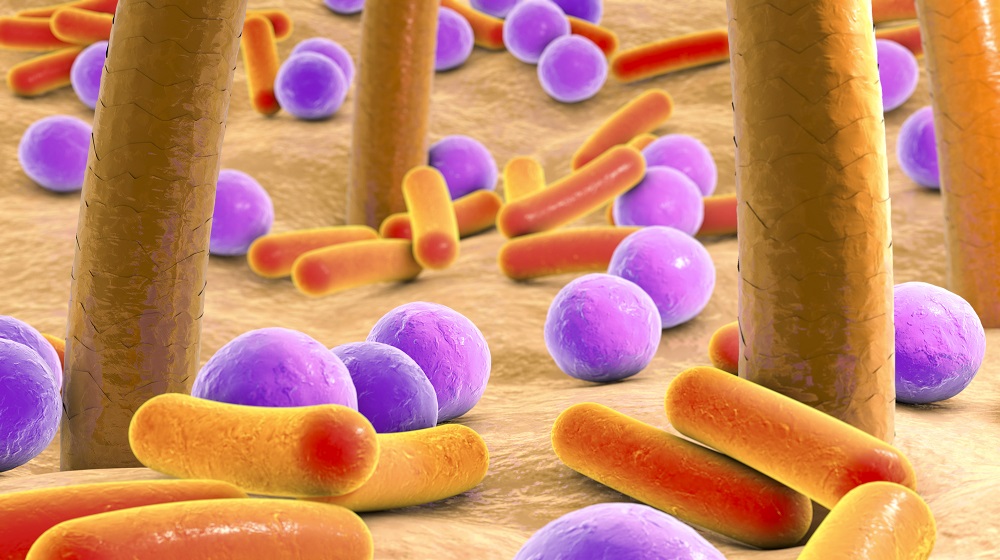UCSD researchers report these bacteria prevent skin cancer
Summary: UCSD researchers just reported that a strain of bacteria prevents skin cancer. [This article first appeared on LongevityFacts. Author: Brady Hartman. ]
The human microbiome is emerging a major player in protecting our health and researchers at the University of California San Diego (UCSD) just reported that some strains of skin bacteria safeguard against cancer.
Leading the study is Richard Gallo, MD, Ph.D., a Distinguished Professor and the chair of the Department of Dermatology at the UCSD School of Medicine, who says
“We have identified a strain of Staphylococcus epidermidis, common on healthy human skin, that exerts a selective ability to inhibit the growth of some cancers,” adding “This unique strain of skin bacteria produces a chemical that kills several types of cancer cells but does not appear to be toxic to normal cells.”
The researchers published their results in the journal Science Advances on February 28, 2018.
The UCSD team discovered that the Staphylococcus epidermidis bacteria produce the chemical compound 6-N-hydroxyaminopurine (6-HAP). After being exposed to cancer-causing ultraviolet rays (UV), mice with S. epidermidis on their skin that did not make 6-HAP had many skin tumors, while mice with the Staph epidermidis strain producing 6-HAP did not. This result suggests that the Staph epidermidis protected the mice against cancer.
6-HAP inhibits the creation of DNA and prevents the spread of transformed cancer cells. Moreover, it seems that 6-HAP also has the potential to suppress the development of UV-induced skin tumors.

Mice that received IV injections of 6-HAP every two days over a two-week period experienced no apparent toxic effects. And when transplanted with melanoma cells, the tumor size of the mice was suppressed by more than 50% compared to controls. As Dr. Gallo says,
“There is increasing evidence that the skin microbiome is an important element of human health. In fact, we previously reported that some bacteria on our skin produce antimicrobial peptides that defend against pathogenic bacteria such as, Staph aureus.” adding “In the case of S. epidermidis, it appears to also be adding a layer of protection against some forms of cancer.”
These results, while promising, have only been observed in mice. The approach has not been tested on humans. As Dr. Gallo says,
”Further studies are needed to understand how 6-HAP is produced, if it can be used for prevention of cancer or if loss of 6-HAP increases cancer risk.”
Video courtesy of NCI.
Skin Cancer
One in every three cancers diagnosed is skin cancer. The incidence of skin cancers has been increasing over the past decades due to depletion of the protective ozone layer in the atmosphere. The WHO reports that between 2 and 3 million non-melanoma skin cancers and 132,000 melanoma skin cancers are diagnosed worldwide each year. Over 1 million cases of skin cancer occur in the United States each year, a disproportionately higher number due to multiple factors.
According to the Skin Cancer Foundation, one in five Americans will develop skin cancer in their lifetime. The American Cancer Society estimates that 13,460 Americans will die of skin cancer in 2018, with 2/3rds of those dying from melanoma.
More than 95 percent of skin cancers are the non-melanoma type, which is typically caused by overexposure to the sun’s UV rays. Melanoma is the most deadly form of skin cancer that starts in the pigment-producing skin cells, called melanocytes.
The main factors that cause skin cancer are recreational exposure to the sun and a history of sunburn. The ozone layer filters out harmful UV radiation, and we can expect skin cancers to increase as this protective layer is depleted by air pollution. Scientists estimate that a 10 percent decrease in ozone levels will result in an additional 300,000 non-melanoma and 4,500 melanoma skin cancer cases.
Like this Article?
- Help us spread the word – Please click on any social media link to share this article.
- Follow us on social media – Google+ or Reddit.
References
Cover Photo: Dr_Microbe / Getty Images.
“Beneficial skin bacteria protect against skin cancer.” University of California – San Diego. February 28, 2018. Press release via MedicalXpress.
T. Nakatsuji et al., “A commensal strain of Staphylococcus epidermidis protects against skin neoplasia,” Science Advances. Vol. 4, no. 2, eaao4502. 28 Feb 2018.
Disclaimer
Diagnosis, Treatment, and Advice: This article is intended for informational and educational purposes only and is not a substitute for qualified, professional medical advice. The opinions and information stated in this article should not be used during any medical emergency or for the diagnosis or treatment of any medical condition. Consult a qualified and licensed physician for the diagnosis and treatment of any and all medical conditions. Experimental treatments carry a much higher risk than FDA-approved ones. Dial 9-1-1, or an equivalent emergency hotline number, for all medical emergencies. As well, consult a licensed, qualified physician before changing your diet, supplement or exercise programs.
Photos, Endorsements, & External Links: This article is not intended to endorse organizations, companies, or their products. Links to external websites, mention or depiction of company names or brands, are intended for illustration only and do not constitute endorsements.
